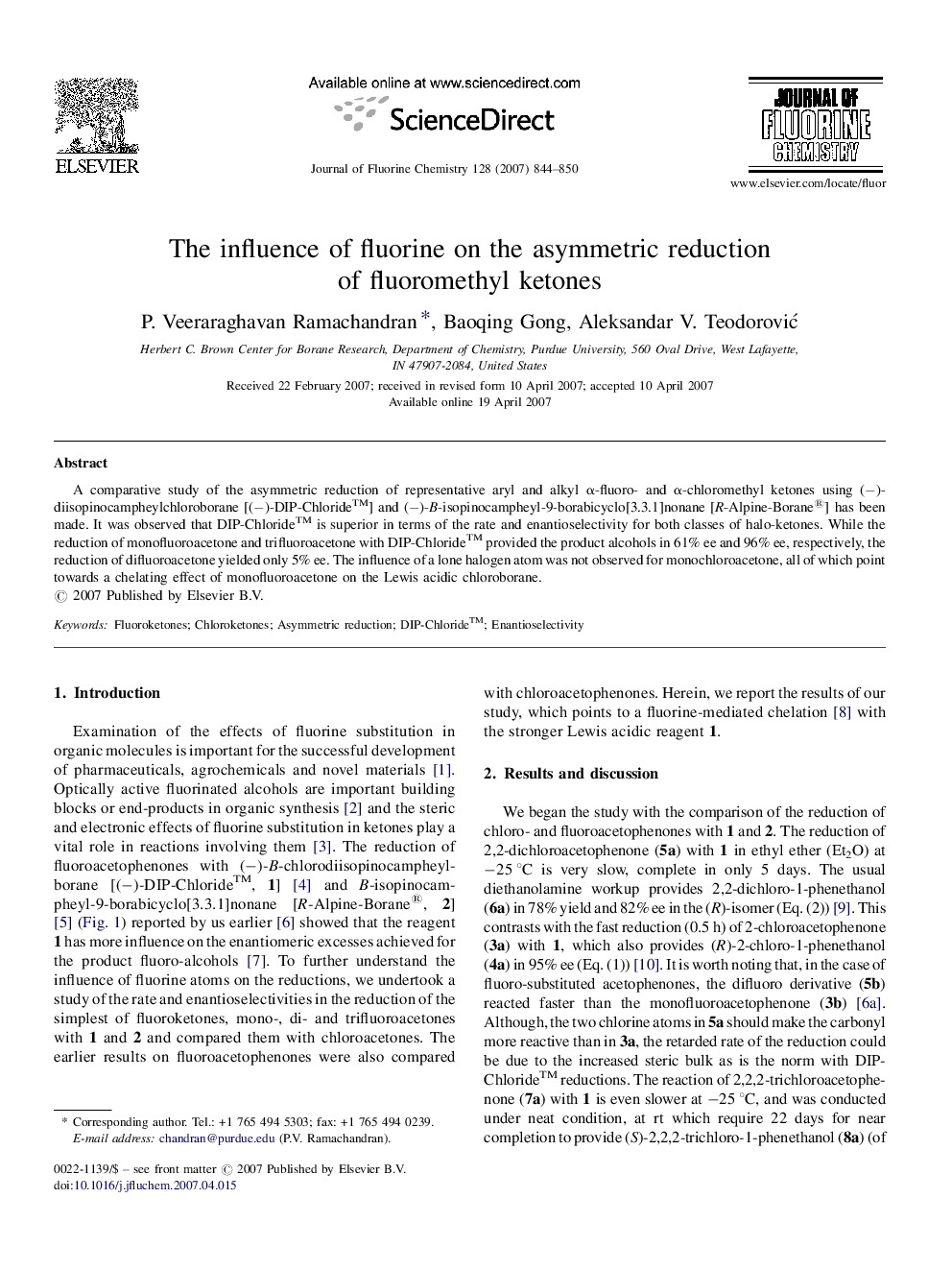| Article ID | Journal | Published Year | Pages | File Type |
|---|---|---|---|---|
| 1315628 | Journal of Fluorine Chemistry | 2007 | 7 Pages |
A comparative study of the asymmetric reduction of representative aryl and alkyl α-fluoro- and α-chloromethyl ketones using (−)-diisopinocampheylchloroborane [(−)-DIP-Chloride™] and (−)-B-isopinocampheyl-9-borabicyclo[3.3.1]nonane [R-Alpine-Borane®] has been made. It was observed that DIP-Chloride™ is superior in terms of the rate and enantioselectivity for both classes of halo-ketones. While the reduction of monofluoroacetone and trifluoroacetone with DIP-Chloride™ provided the product alcohols in 61% ee and 96% ee, respectively, the reduction of difluoroacetone yielded only 5% ee. The influence of a lone halogen atom was not observed for monochloroacetone, all of which point towards a chelating effect of monofluoroacetone on the Lewis acidic chloroborane.
Graphical abstractA comparative study of the asymmetric reduction of representative aryl and alkyl α-fluoro- and α-chloromethyl ketones using (−)-diisopinocampheylchloroborane [(−)-DIP-Chloride™] and (−)-B-isopinocampheyl-9-borabicyclo[3.3.1]nonane [R-Alpine-Borane®] has been made. It was observed that DIP-Chloride™ is superior in terms of the rate and enantioselectivity for both classes of halo-ketones. While the reduction of monofluoroacetone and trifluoroacetone with DIP-Chloride™ provided the product alcohols in 61% ee and 96% ee, respectively, the reduction of difluoroacetone yielded only 5% ee. The influence of a lone halogen atom was not observed for monochloroacetone, all of which point towards a chelating effect in the presence of the Lewis acidic chloroborane.Figure optionsDownload full-size imageDownload as PowerPoint slide
